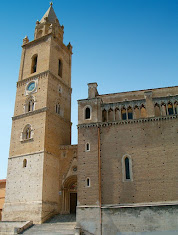Writer and professor developed theories about spending and saving
 |
| Franco Modigliani studied in Rome before emigrating to America |
He wrote several books outlining his economic theories, became a professor at three American universities, and received the Nobel Memorial Prize in Economics in 1985.
Modigliani also formulated the Modigliani-Miller theorem for corporate finances, which is based on the idea that the value of a private firm is not affected by whether it is financed by equity or by debt.
Born and brought up in a Jewish family, Modigliani enrolled in the Faculty of Law at the Sapienza University of Rome at the age of 17. In his second year at Sapienza, his entry in a national economics contest won first prize and he was presented with it by the Fascist dictator, Benito Mussolini.
Modigliani went on to write essays for the Fascist magazine Lo Stato, displaying an inclination for the fascist ideals that were critical of liberalism at the time.
He argued the case for socialism in an article for the magazine about the organisation and management of production in a socialist economy.
But after racial laws were passed in Italy in 1938, he left Rome, with his girlfriend, Serena Calabi, whose father was a prominent opponent of Mussolini, to join her parents in Paris.
 |
| The neoclassical main building of the Massachusetts Institute of Technology - Modigliani's base for many years |
Later that year, Modigliani emigrated with his girlfriend’s family to the United States, where he enrolled at the New School for Social Research in New York. The PhD dissertation he submitted there was judged to be ‘ground breaking’.
Modigliani taught at Columbia University and Bard College in New York between 1942 and 1944 and became a naturalised citizen of the US in 1946. He later taught at the University of Illinois and Carnegie Mellon University before becoming an Institute Professor at the Massachusetts Institute of Technology (MIT).
He developed the hypothesis that consumers aim for a stable level of consumption during their lifetime by saving during their working years and spending during their retirement. Economists believe this was an original theory when he introduced it in a paper written in 1954.
Modigliani also introduced the concept of the NIRU, the non-inflationary rate of unemployment, which referred to the level of unemployment, below which inflation rises, which he believed should influence policy decisions.
 |
| Modigliani in 2000: he continued to teach well into his 80s |
With Leah Modigliani, his granddaughter, who followed him in becoming an economist, he developed the Modigliani Risk-Adjusted Performance, a measure of the risk-adjusted returns of an investment portfolio.
His Nobel prize was awarded to him for his pioneering analyses of saving and financial markets and in the same year he received MIT’s James R Killian Faculty Achievement award.
In 1997, he received an honoris causa degree in Management Engineering from the University of Naples Federico II.
Modigliani became a trustee of the Economists for Peace and Security organisation and was an influential adviser to the Federal Reserve, designing a tool to guide monetary policy in Washington.
A collection of Modigliani’s economic papers is now housed in the Duke University’s Rubenstein Library in Durham, North Carolina.
Modigliani died in 2003 at the age of 85 in Cambridge, Massachusetts, where he taught until the last six months of his life. Two years before his death he had written about his life as an economist in his autobiography, Adventures of an Economist.
Travel tip:
Marcello Piacentini's modern campus at the
Sapienza University of Rome
The university Franco Modigliani attended in Rome is often known simply as La Sapienza, which means ‘the wisdom.’ It can trace its origins back to 1303, when it was opened by Pope Boniface VIII as the first pontifical university. In the 19th century the University broadened its outlook and a new campus, designed by Urban theorist and architect, Marcello Piacentini, was built near the Termini railway station in 1935. Rome University now caters for more than 112,000 students.
Travel tip:%20(2).jpg)
The Via della Conciliazione, also designed by
Marcello Piacentini, frames St Peter's Basilica
Architect Marcello Piacentini studied arts and engineering in Rome and afterwards worked for the Fascist Government. He developed a simplified neoclassicism which became the mainstay of Fascist architecture and as well as designing the new campus for La Sapienza, he was responsible for the redesign of the road approaching St Peter’s in Rome, Via della Conciliazione. Roughly 500m long, Via della Conciliazione connects St Peter's Square to the Castel Sant'Angelo on the western bank of the Tevere (Tiber) river. A great many buildings, many of them residential, had to be requisitioned and demolished to create space for the road, which was constructed between 1936 and 1950 as the primary access route to St Peter's Square.
Also on this day:
1466: The birth of music printer Ottaviano dei Petrucci
1511: The birth of sculptor and architect Bartolomeo Ammannati
1943: The birth of actress, singer and TV presenter Raffaella Carrà
1946: The birth of football manager Fabio Capello
1952: The birth of actress Isabella Rossellini







